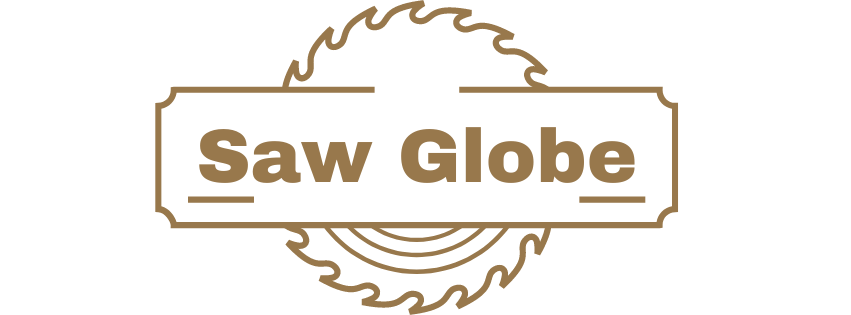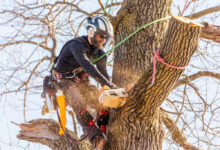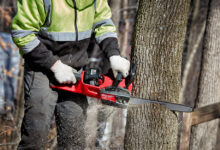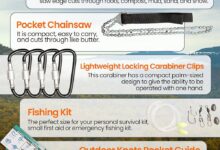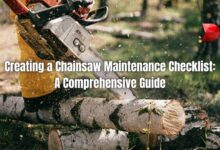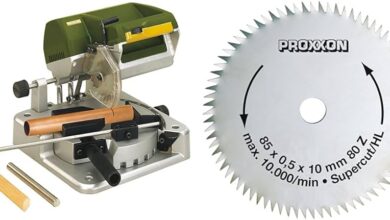Contents
Introduction
Chainsaws are powerful tools that can be used for a variety of tasks, from felling trees to cutting firewood. However, they can also be dangerous if they are not used properly. For beginners, it is important to learn the basics of chainsaw safety and operation before using one. This article will provide you with the information you need to get started.
Before you start using a chainsaw, it is important to read the manufacturer’s instructions carefully. These instructions will provide you with specific information about the chainsaw you are using, including how to assemble it, start it, and operate it safely.
Once you have read the instructions, you should practice using the chainsaw in a safe environment. This will help you get comfortable with the controls and learn how to use the saw effectively. It is also a good idea to practice cutting small branches before you start cutting larger trees.
When you are using a chainsaw, it is important to wear appropriate safety gear. This includes a hard hat, eye protection, ear protection, and gloves. You should also wear long pants, a long-sleeved shirt, and sturdy boots.
It is also important to be aware of the surroundings when you are using a chainsaw. Make sure there are no people or animals in the area, and be aware of any obstacles that could get in your way.
If you are ever unsure about how to use a chainsaw, it is best to err on the side of caution and ask for help from a professional.
Strengths and Weaknesses
Strengths:
Chainsaws are powerful tools that can be used for a variety of tasks. They are relatively easy to use, and they can be very efficient at cutting through wood.
Chainsaws are also portable, which makes them easy to transport to different locations. This makes them ideal for use in remote areas or for jobs that require a lot of mobility.
Finally, chainsaws are relatively affordable, which makes them a good option for homeowners and small businesses.
Weaknesses:
Chainsaws can be dangerous if they are not used properly. They can cause serious injuries, including cuts, lacerations, and amputations.
Chainsaws are also noisy and can produce a lot of vibration. This can make them uncomfortable to use for extended periods of time.
Finally, chainsaws require regular maintenance and sharpening. This can be time-consuming and expensive.
Tips for Safe Use
Here are some tips for using a chainsaw safely:
- Always wear appropriate safety gear.
- Be aware of your surroundings and make sure there are no people or animals in the area.
- Start the chainsaw on the ground and hold it firmly with both hands.
- Keep your hands away from the cutting chain.
- Cut wood that is supported on both ends.
- Never cut above your shoulders.
- Never use a chainsaw that is damaged or in need of repair.
Troubleshooting
If you are having trouble using a chainsaw, here are some troubleshooting tips:
- Make sure the chain is properly tensioned.
- Check the spark plug and replace it if necessary.
- Clean the air filter.
- Check the fuel lines for leaks.
- If the chainsaw is still not working properly, take it to a qualified repair technician.
Maintenance and Care
To keep your chainsaw in good working condition, it is important to perform regular maintenance and care. Here are some tips:
- Clean the chainsaw after each use.
- Sharpen the chain regularly.
- Replace the spark plug annually.
- Check the fuel lines for leaks and replace them if necessary.
- Store the chainsaw in a dry place.
FAQs
Q: What is the best way to learn how to use a chainsaw?
A: The best way to learn how to use a chainsaw is to read the manufacturer’s instructions and practice using the saw in a safe environment.
Q: What is the most important safety tip to remember when using a chainsaw?
A: The most important safety tip to remember when using a chainsaw is to always wear appropriate safety gear.
Q: What should I do if I am having trouble using a chainsaw?
A: If you are having trouble using a chainsaw, you should consult the troubleshooting tips in this article or take the saw to a qualified repair technician.
Q: How often should I sharpen the chain on my chainsaw?
A: The chain on your chainsaw should be sharpened regularly, especially if you are using it to cut hard or dirty wood.
Q: How often should I replace the spark plug on my chainsaw?
A: The spark plug on your chainsaw should be replaced annually.
Q: How should I store my chainsaw?
A: Your chainsaw should be stored in a dry place.
Q: Can I use a chainsaw to cut metal?
A: No, you should not use a chainsaw to cut metal.
Q: Can I use a chainsaw to cut concrete?
A: No, you should not use a chainsaw to cut concrete.
Q: Can I use a chainsaw to cut plastic?
A: Yes, you can use a chainsaw to cut plastic, but you should use a special plastic cutting chain.
Q: Can I use a chainsaw to cut wet wood?
A: Yes, you can use a chainsaw to cut wet wood, but you should be careful not to get the saw too wet.
Q: Can I use a chainsaw to cut frozen wood?
A: No, you should not use a chainsaw to cut frozen wood.
Q: How do I dispose of a used chainsaw?
A: You should dispose of a used chainsaw according to your local regulations.
Conclusion
Chainsaws are powerful tools that can be used for a variety of tasks. However, they can also be dangerous if they are not used properly. By following the tips in this article, you can learn how to use a chainsaw safely and effectively.
If you are ever unsure about how to use a chainsaw, it is best to err on the side of caution and ask for help from a professional.
By using a chainsaw safely and properly, you can get years of use out of this versatile tool.
Closing Remarks
I hope this article has been helpful. If you have any questions, please feel free to leave a comment below.
Thank you for reading!
